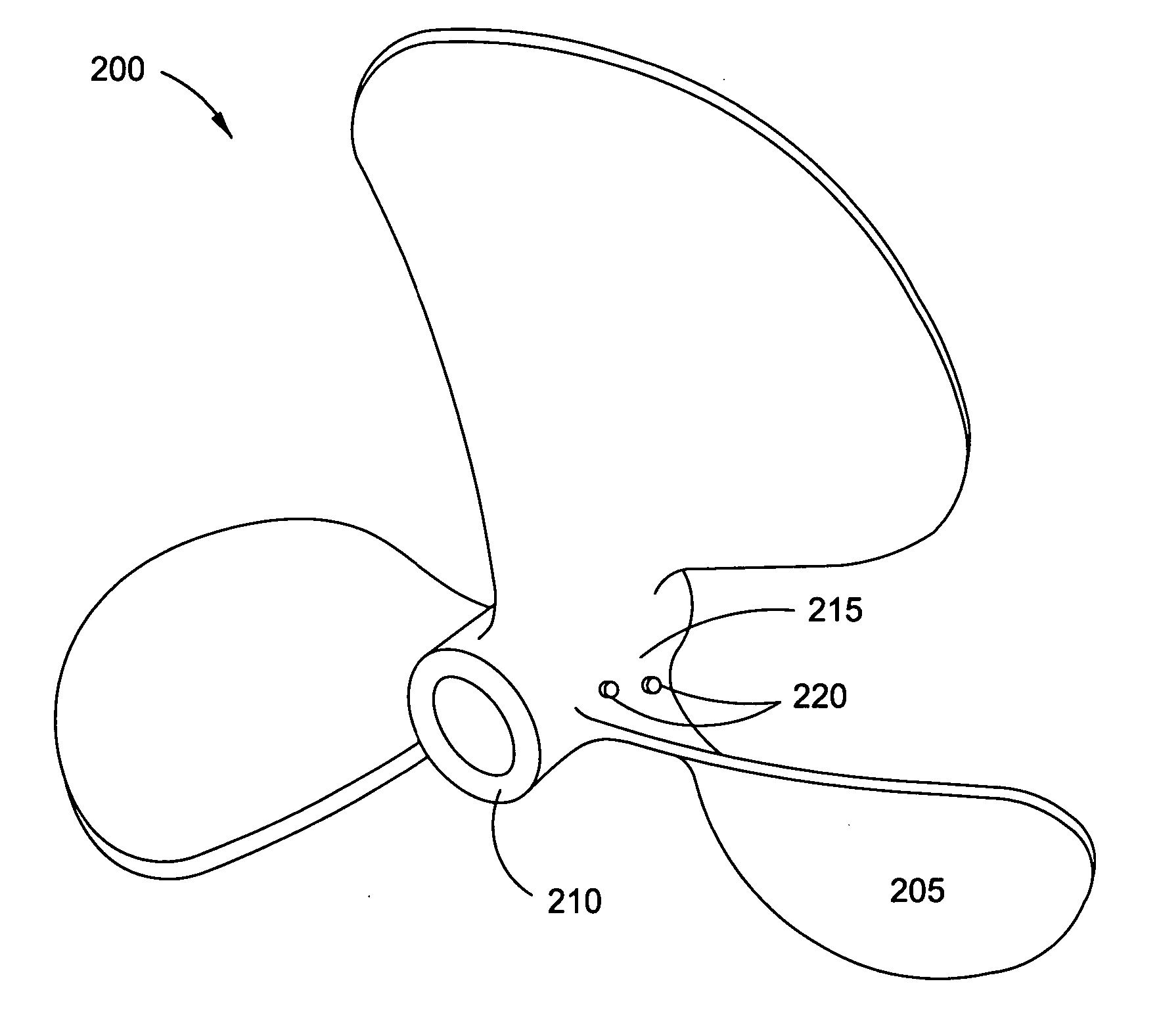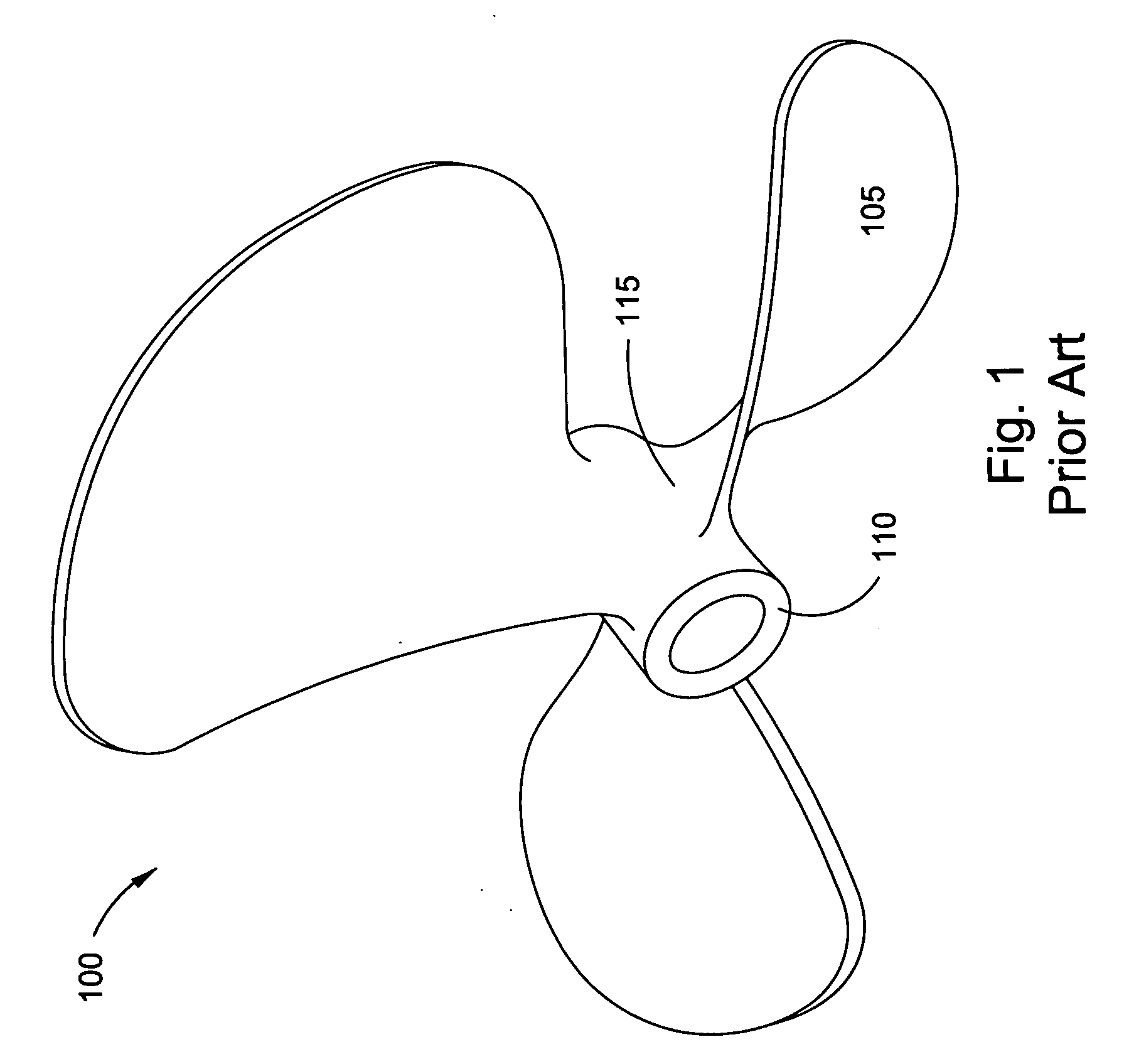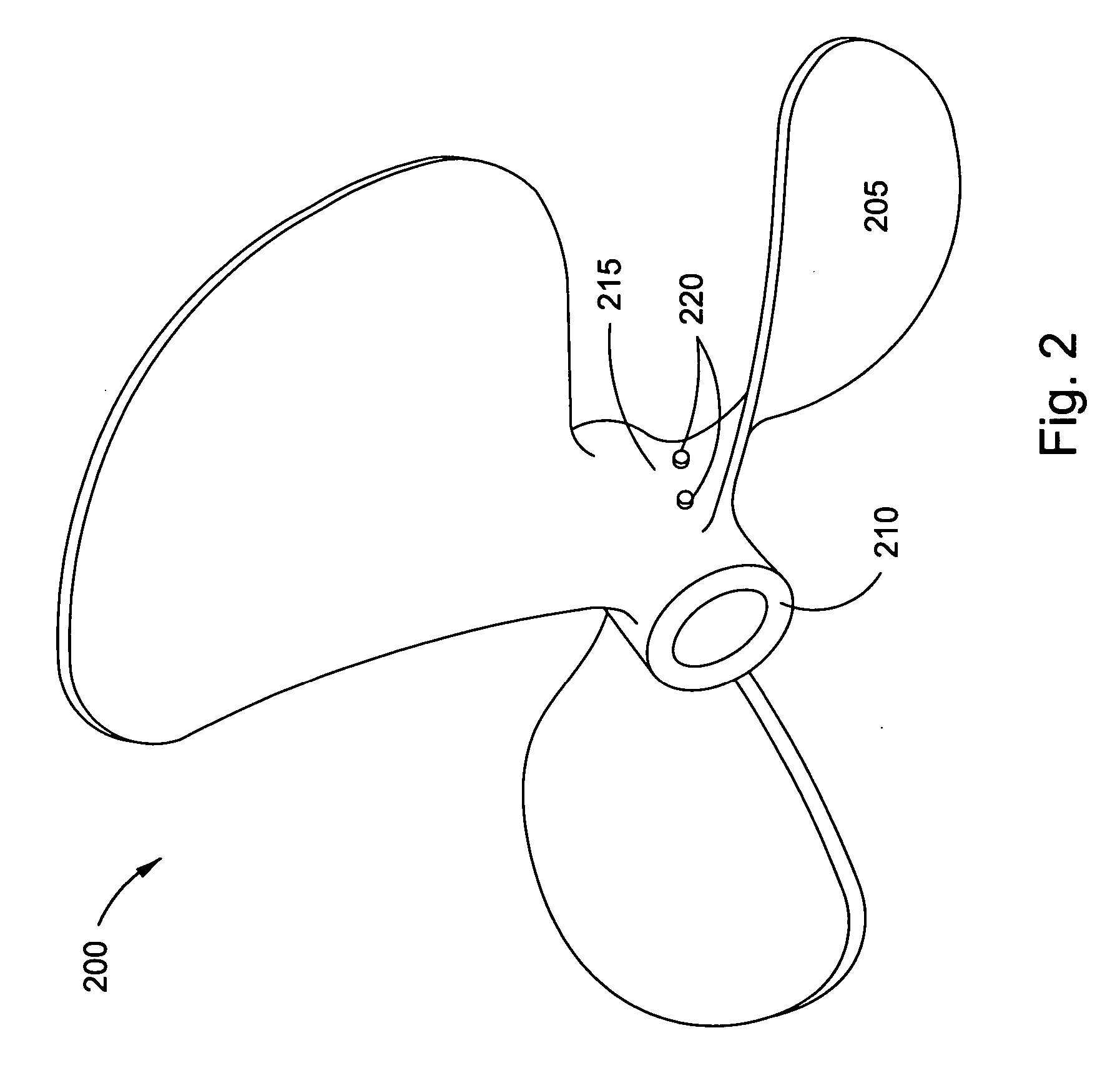Prevention of cavitation corrosion
a technology of cavitation corrosion and corrosion prevention, which is applied in the direction of rotary propellers, marine propulsion, vessels, etc., can solve the problems of large noise, high energy consumption, and major damage, and achieve the effect of reducing noise, reducing energy consumption, and reducing energy consumption
- Summary
- Abstract
- Description
- Claims
- Application Information
AI Technical Summary
Benefits of technology
Problems solved by technology
Method used
Image
Examples
Embodiment Construction
[0014]FIG. 1 illustrates a three blade right hand rotation propeller 100. Blade 105 is in the area of blade root 115. In the normal operation of a high speed propeller, low pressure areas, or partial vacuums, develop around hub 110. As the partial vacuums collapse, shock waves are sent out from the center of the collapsed vacuum. These shock waves reflect off of hub 110 and can cause cavitation corrosion, particularly in the area of blade root 115.
[0015]FIG. 2 illustrates a similar propeller to that of FIG. 1, a three blade right hand rotation propeller 200. However, in FIG. 2, the propeller is fitted with an embodiment of the present invention including a disruption means. Raised nubs 220 are integrated into blade root 215. The term integrated is hereby defined as to form, coordinate, or blend into a functioning or unified whole, meaning the disruption means may be cast along with the propeller to form a unified body, or the disruption means may be individual pieces brought togeth...
PUM
 Login to View More
Login to View More Abstract
Description
Claims
Application Information
 Login to View More
Login to View More - R&D
- Intellectual Property
- Life Sciences
- Materials
- Tech Scout
- Unparalleled Data Quality
- Higher Quality Content
- 60% Fewer Hallucinations
Browse by: Latest US Patents, China's latest patents, Technical Efficacy Thesaurus, Application Domain, Technology Topic, Popular Technical Reports.
© 2025 PatSnap. All rights reserved.Legal|Privacy policy|Modern Slavery Act Transparency Statement|Sitemap|About US| Contact US: help@patsnap.com



